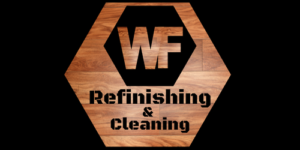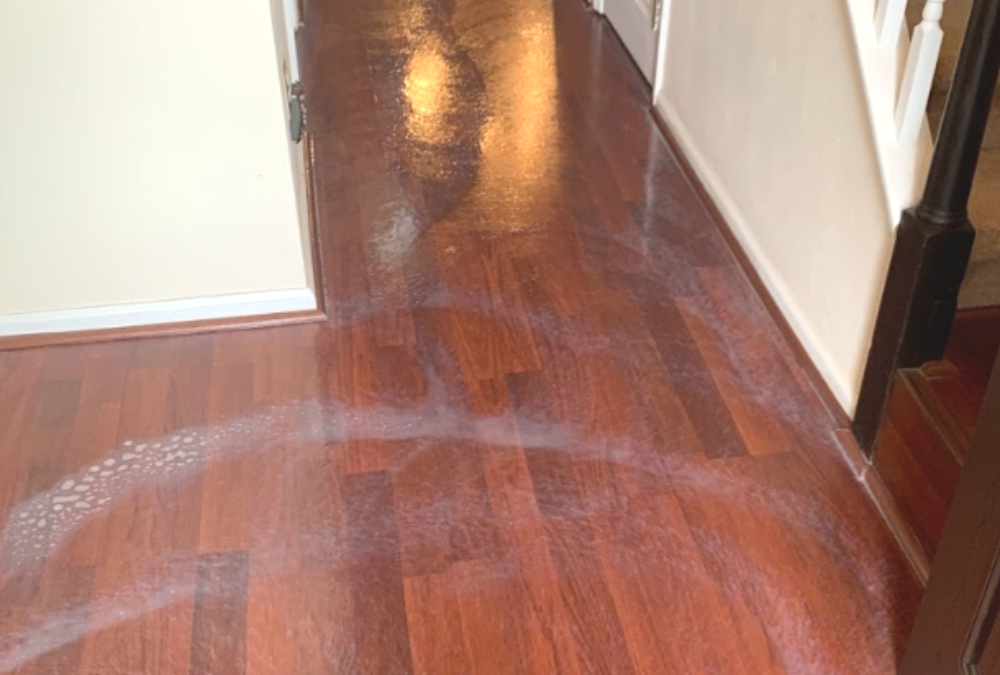Can You Use Bleach on Hardwood Floors?
Generally, bleach should only be used on hard surfaces. If hardwood floor cleaner isn’t available, a bleach treatment can be attempted, but only if your floor is bleach-safe and in good condition.
Does Bleach Damage Wood Floors?
Bleach is a powerful disinfectant and stain remover commonly used for cleaning purposes.
However, when it comes to wood floors, bleach can cause significant damage if used improperly.
Bleach is highly alkaline and can strip away the natural oils and protective finishes of the wood, leading to discoloration, dullness, and even warping or cracking. Additionally, bleach can weaken the wood fibers, compromising the structural integrity of the floor over time.
Therefore, it is advisable to avoid using bleach on wood floors to prevent irreversible damage.
Alternative Cleaning Solutions for Wood Floors:
Fortunately, there are several effective and safe alternatives to bleach for cleaning wood floors:
- Vinegar and Water Solution: Mix equal parts of distilled white vinegar and water in a spray bottle. This solution acts as a gentle cleanser and can effectively remove dirt and grime from wood floors.
- Mild Soap and Water: Use a mild soap, such as a pH-neutral liquid soap, mixed with warm water. Apply the solution sparingly to a damp mop or cloth and gently clean the wood floor, making sure not to saturate it with excessive moisture.
- Commercial Wood Floor Cleaners: Look for commercial wood floor cleaners specifically formulated for wooden surfaces. Read and follow the manufacturer’s instructions carefully to ensure safe usage.
How To Identify a Bleach Stain
Identifying a bleach stain on a surface can be relatively straightforward. Here are some steps to help you identify a bleach stain:
- Look for discoloration: Bleach stains often result in a lighter or white discoloration on the affected surface. The stain may appear as a stark contrast to the original color of the material.
- Check for fading: Bleach has the ability to remove pigments from surfaces. If you notice an area that has become significantly faded compared to the surrounding area, it could be a bleach stain.
- Assess the texture: Bleach can affect the texture of certain materials. It may cause fibers to become weak or brittle, resulting in a rough or uneven surface. Examine the stained area to see if there are any changes in texture.
- Consider the smell: Bleach has a distinctive odor. If you recently used bleach or were in close proximity to it, and you notice a discoloration on a surface afterward, it could indicate a bleach stain.
- Verify the cause: If you’re unsure whether a stain is from bleach or another substance, try to recall any recent cleaning or accidental spill incidents involving bleach. If you have used bleach in the vicinity, there is a higher likelihood that the stain is caused by it.
Wood Floor Natural Beauty
While bleach may be a powerful cleaning agent, it can cause significant damage to wood floors. To clean and maintain your wood floors safely, it is advisable to use alternative solutions such as vinegar and water or mild soap and water. However, for comprehensive wood floor maintenance, including repairs and refinishing, it is best to hire a professional service like WoodFloorRefinishing.com. Their expertise, experience, and specialized equipment can help ensure that your wood floors retain their natural beauty and durability for years to come.
Why Hire a Professional for Wood Floor Maintenance:
Maintaining wood floors requires expertise and specialized knowledge. Here are a few reasons why hiring a professional wood floor maintenance service, such as WoodFloorRefinishing.com, can be advantageous:
- Experience and Skill: Professionals have extensive experience in working with wood floors. They possess the necessary skills and knowledge to assess the condition of your floors, recommend suitable cleaning methods, and handle any necessary repairs or refinishing.
- Equipment and Techniques: Professionals utilize advanced equipment and techniques to clean, repair, and refinish wood floors effectively. They have access to specialized tools that ensure optimal results while minimizing the risk of damage.
- Preservation and Longevity: Hiring professionals ensures that your wood floors receive the care they need to maintain their beauty and longevity. Professionals can identify potential issues early on and provide appropriate maintenance measures to prevent further damage.
Floor Cleaning Topics:
- Steam Carpet Cleaning -Summit NJ
- How to dry carpet after cleaning
- How to get rid of odor in carpets
- Basement water damage -steam carpet cleaning
- Lear how to clean wood floor
- How often should I clean my carpet?
- Best Homemade carpet cleaner
- Hotel Carpet Cleaning
- Our Expertise in High-Traffic Areas ( Hotels, Apartments buildings…)
- Expert Commercial Carpet Cleaning Services
Is it better Shampoo or steam cleaning?
Steam cleaning stands out as a supremely effective method, owing to its advanced technology and integrated machinery. Moreover, the infusion of hot water and cleansing agents ensures a swift and thorough penetration into upholstery, surpassing the efficacy of traditional shampooing techniques.

Residential Wood Floor Cleaning
Commercial Wood Floor Cleaning
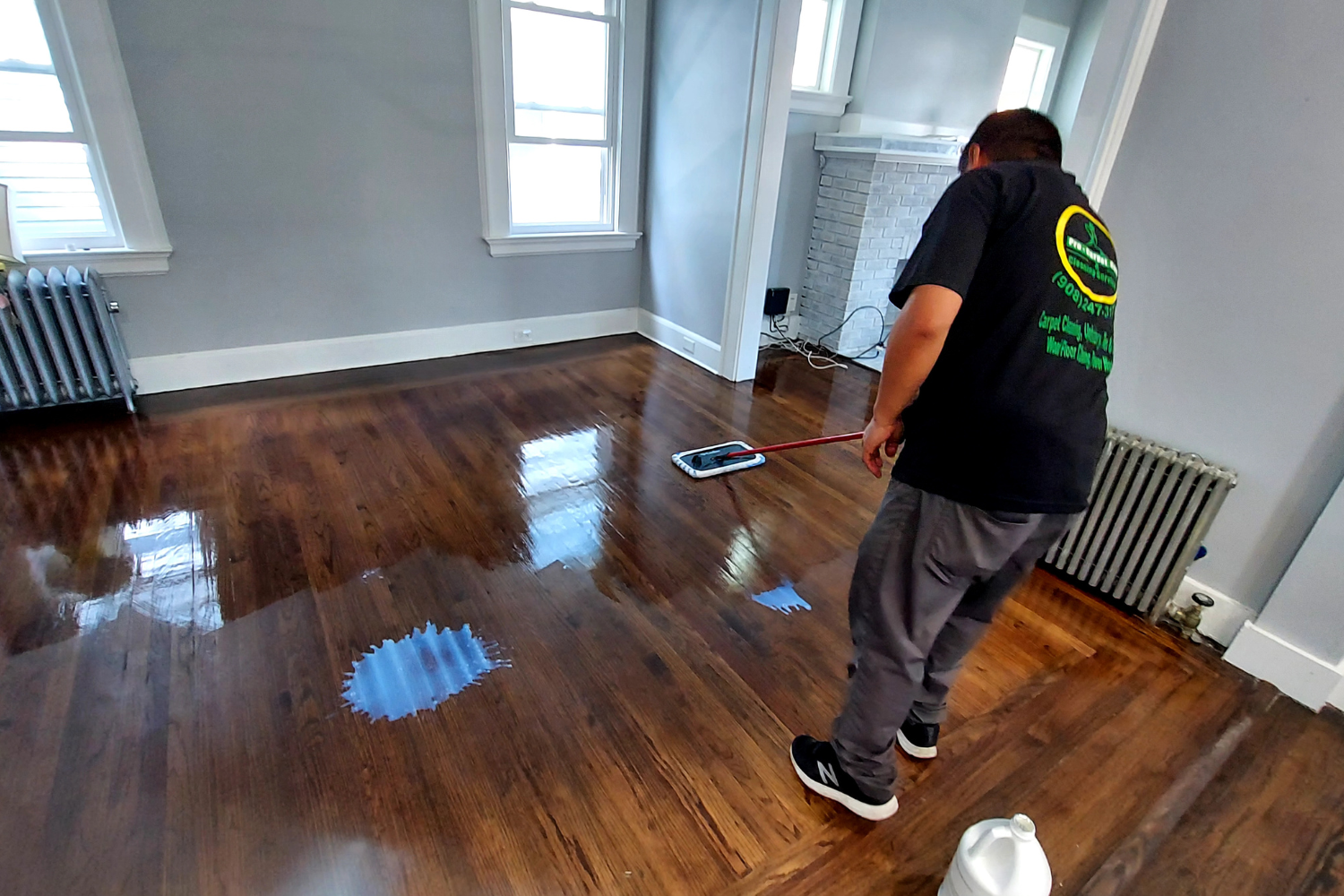
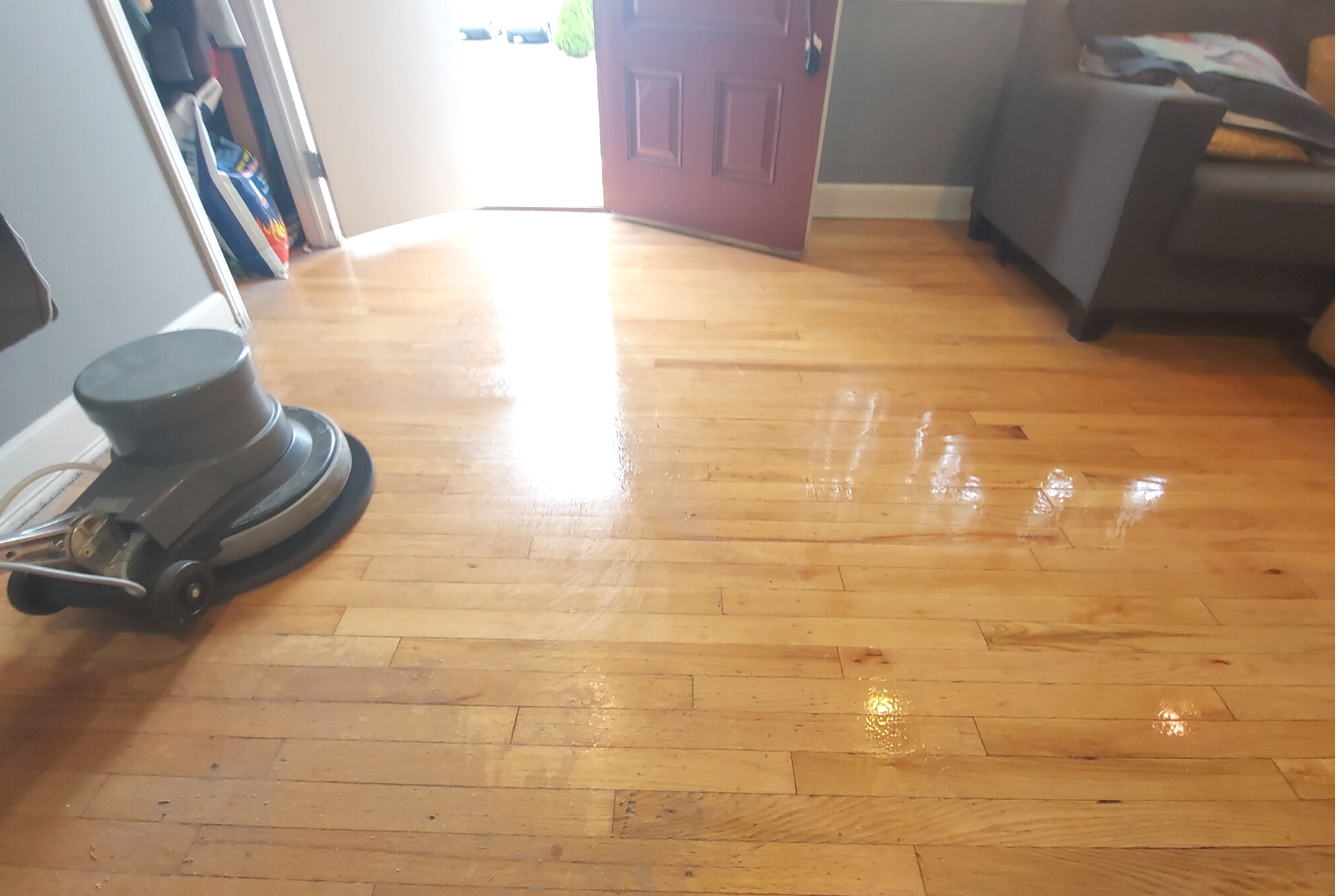
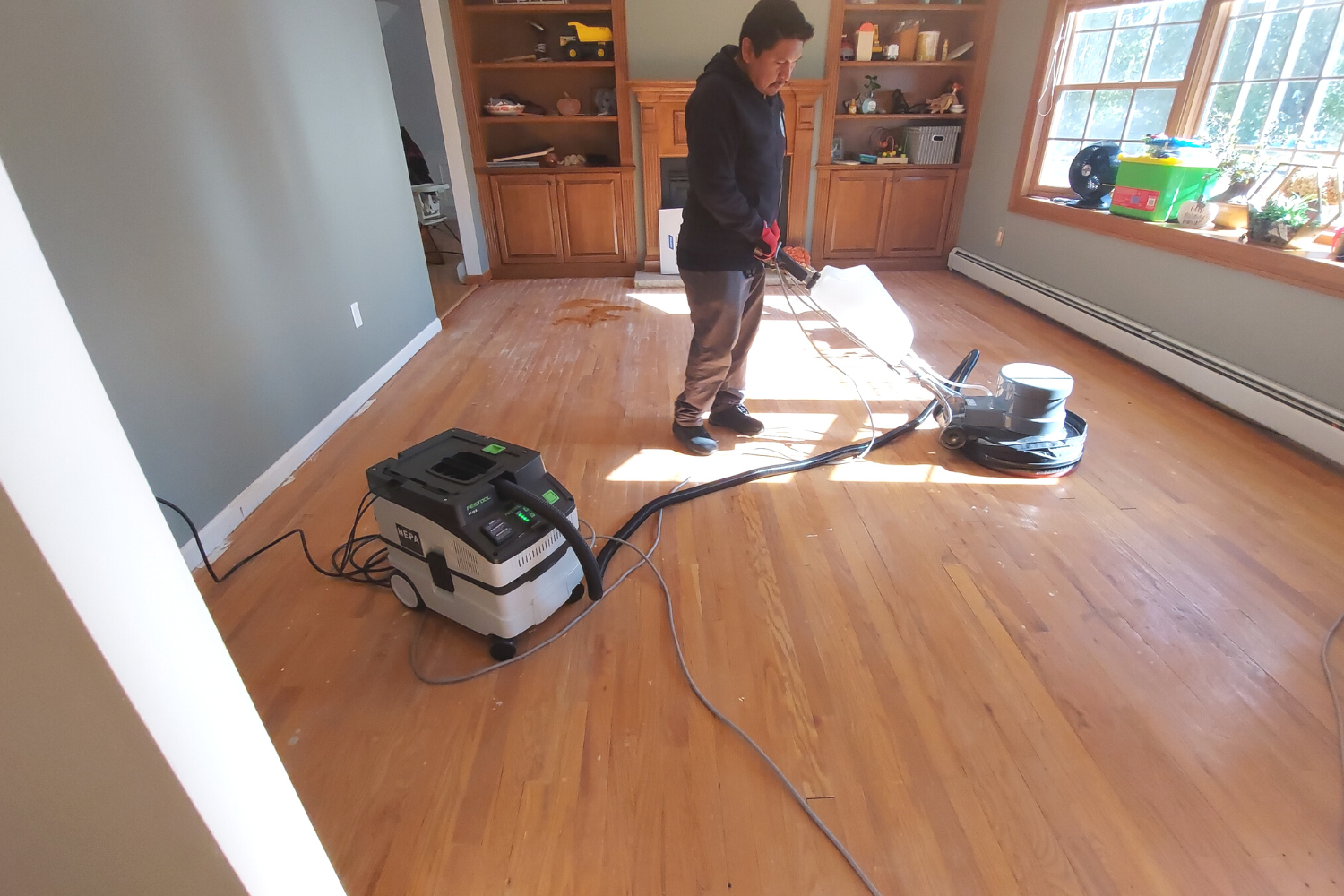
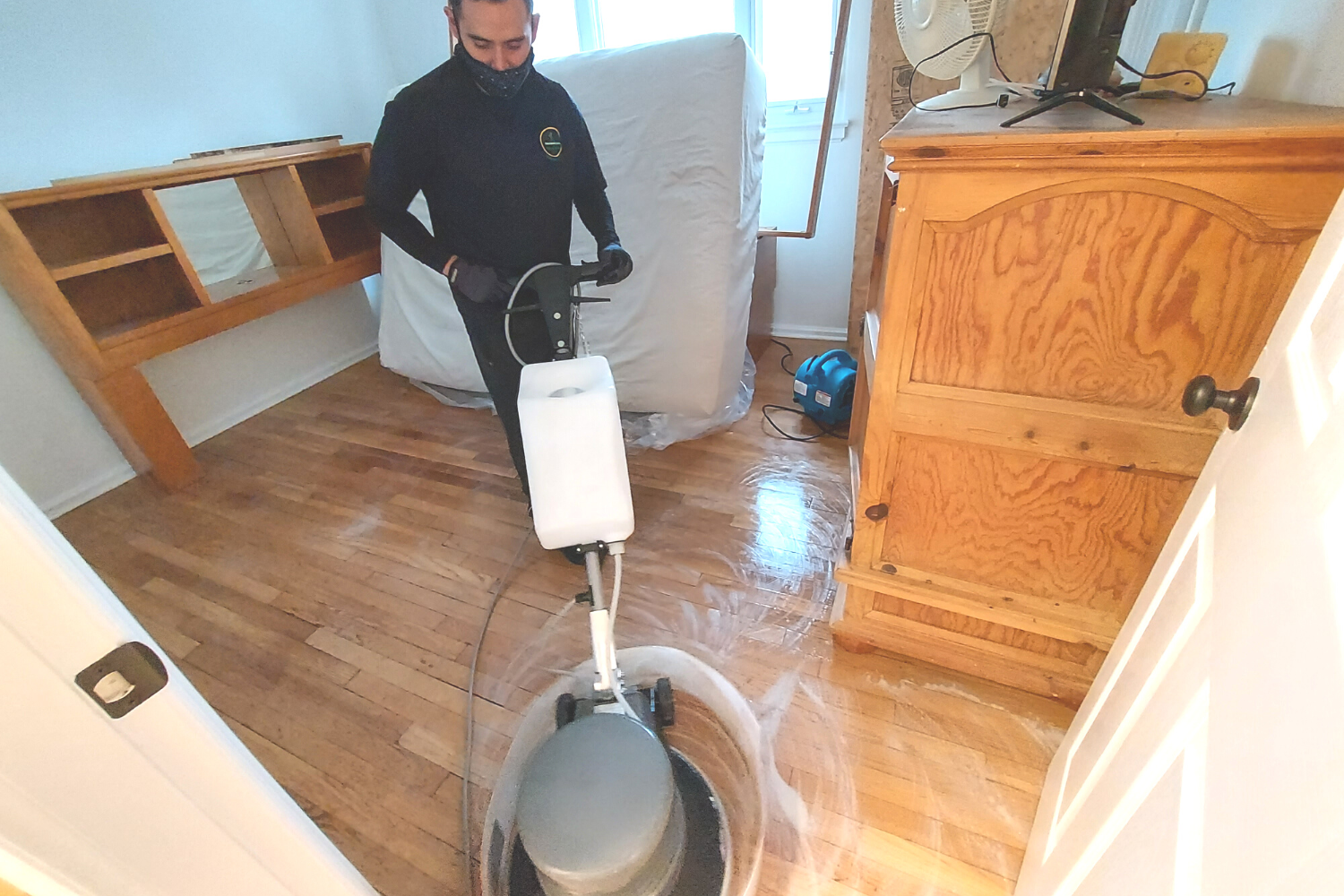
General Questions
How expensive is Clean & Recoat?
Prices will vary but typically a contractor will charge you less than what they would charge you for sanding and refinishing the floor. Pricing will depend on how much time they spend cleaning a floor, the type of finish they use and the number of applications of finish they make. Get several estimates but pay careful attention to how long they will take, how they will prep the surface and the type of finish they will use. Learn More…
Is this a dusty, smelly process?
The smell of the chemicals used to clean the floors is comparable to typical household cleaners and are not toxic or hazardous. The buffers we use have dust containment systems attached to vacuums to minimize any dust from prep work. We only work with waterborne urethanes that have no offensive odors. Done correctly, Clean & Recoat is the least invasive recoating process on the market today.
How log will a Clean & Recoat last?
With proper care and maintenance and by following a common sense approach to reduce wear and damage, a floor that’s been recoated can give you years of excellent service. I’ve seen floors that I recoated more than ten years ago that are still in very good shape. Most floors that are being recoated will be getting a waterborne finish and these finishes are very good and easily maintained. Learn More…
What is Laminate Flooring?
Laminate flooring is a tongue and groove interlocking flooring system that comes in either planks or squares. All of these floors have a wear layer, a decorative print film layer, an inner core structure, and some type of backing support layer — usually melamine. The print film layer is either fused or glued to the inner core. The print film can be a photo of any real floor. The earlayer is applied to the decorative print layer to protect the pattern. Melamine resins are the main component of the wearlayer. The melamine surface gets its incredible durability from aluminum oxide. Aluminum oxide is almost as hard as diamonds and provides unsurpassed wear and stain resistance. Learn More…
What is Engineered Flooring?
Engineered flooring is produced by bonding three or more layers of wood. The crossing of grain direction within the boards makes this a very dimensionally stable product able to resist nearly all expansion and shrinkage from normal moisture changes. This is one primary feature that makes it suitable for use directly on concrete and below-grade application. Learn More…
Will my floor age or change color?
Yes. You can expect to see shade differences in your floor over time. The cause is usually from exposure to the ultra-violet rays of the sun, whether direct or indirect. This color change will be more noticeable in lighter colors, which will darken over time. In addition, certain species like Brazilian cherry, will naturally darken over the years. These changes are due to the natural characteristics of wood and are not covered by most manufacturers’ warranties.
What is Custom Finishing?
Sanding and refinishing performed to individual specifications. Custom finishing of wood floors is performed in the home on the completely installed new floor, or to refurbish a previously finished floor. Custom finishing permits the owner to select from a full range of stains, sheens and colors.
